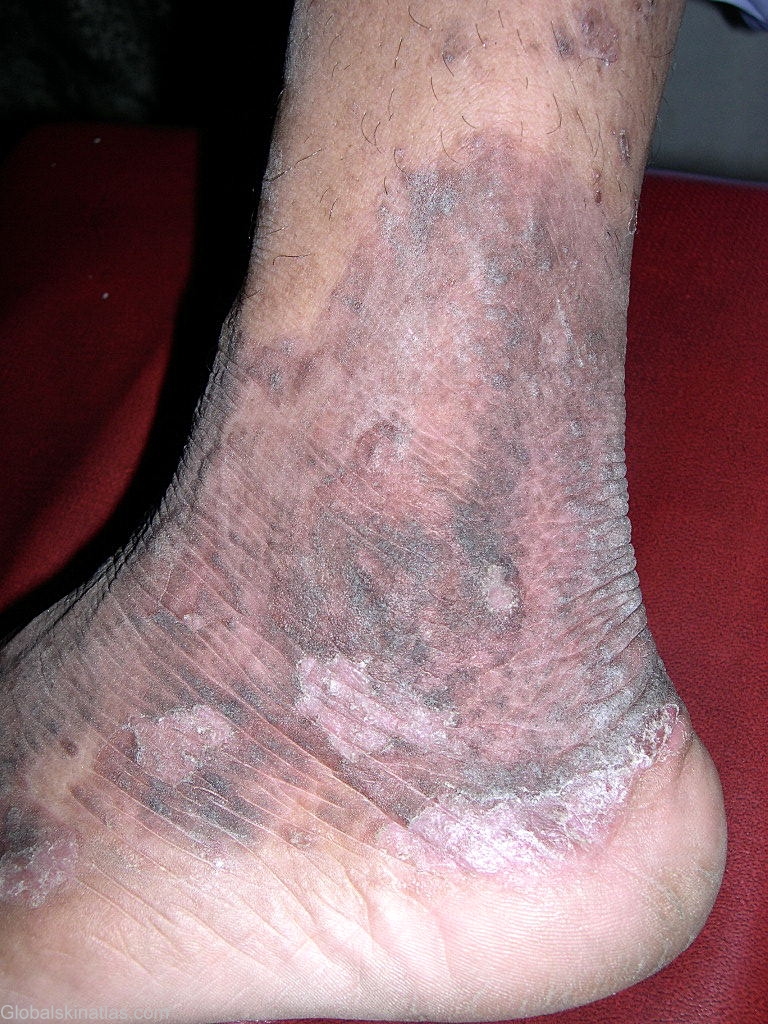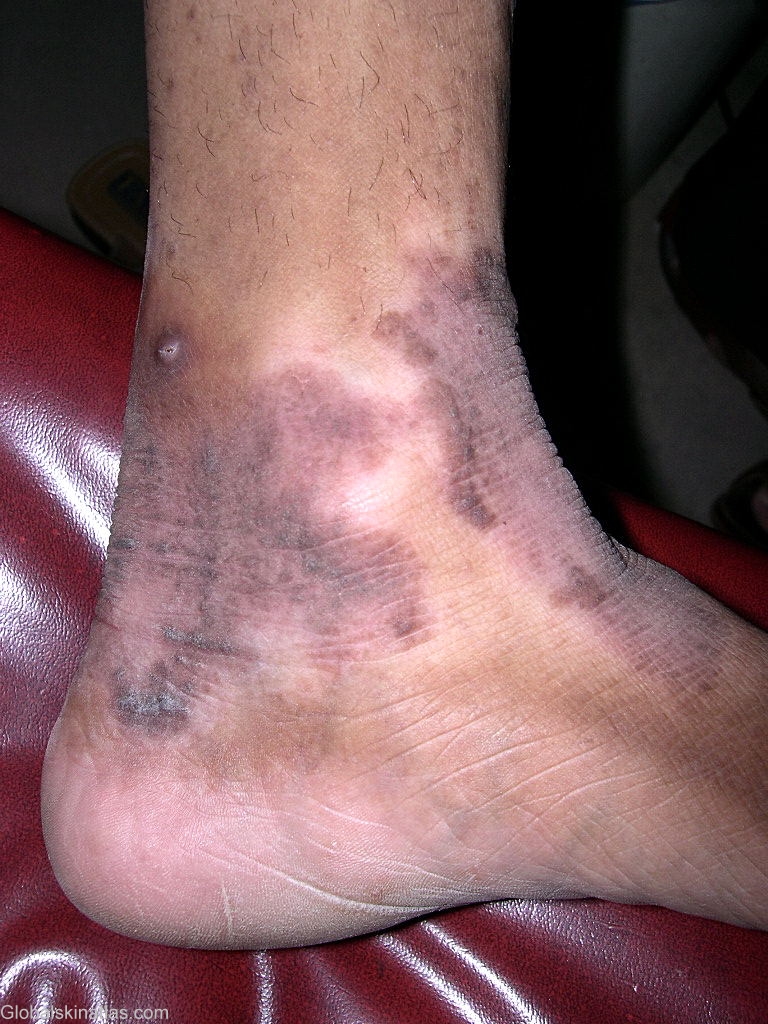

Diagnosis: Necrolytic acral erythema
Description: Hyperkeratotic plaques with a rim of dusky erythema
Morphology: Plaque
Site: Foot,dorsum
Sex: M
Age: 45
Type: Clinical
Submitted By: Shahbaz Janjua
Differential DiagnosisHistory:
Necrolytic acral erythema(NAE) is a recently described necrolytic erythema that is unique in its exclusive acral location and strong association with hepatitis C. NAE belongs to the family of necrolytic erythemas that include necrolytic migratory erythema, acrodermatitis enteropathica, pellagra, and essential fatty acid deficiencies. It was first described in 1996 by El Darouti and El Ela in Egypt in 7 patients with active hepatitis C infection. Clinically NAE is characterized by erythematous to violaceous patches with superficial necrosis in early lesions, and later lesions tended to be hyperkeratotic plaques with a rim of dusky erythema. There is exclusive acral distribution with a predilection for the lower extremities. Other dermatoses associated with Hepatitis C infection include leukocytoclastic vasculitis, cryoglobulinemia, lichen planus, porphyria cutanea tarda, erythema nodosum, erythema multiforme, urticaria, pruritus, malakoplakia, and polyarteritis nodosa.
Ref:
Khanna VJ, Shieh S, Benjamin J, Somach S, Zaim MT, Dorner W Jr, Shill M, Wood GS. Necrolytic acral erythema associated with hepatitis C: effective treatment with interferon alfa and zinc. Arch Dermatol. 2000 Jun;136(6):755-7.

